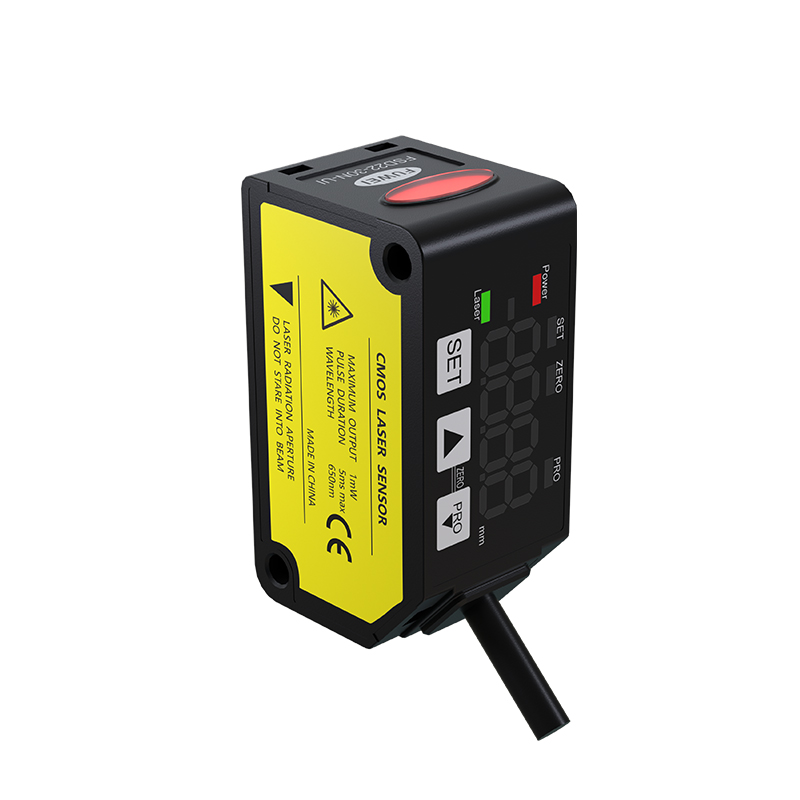Unveiling Precision: The Mechanics Behind Laser Displacement Sensors
2024-05-06
In the realm of modern technology, precision and accuracy are paramount. Laser Displacement Sensors stand as a testament to this, offering unparalleled measurement capabilities in various industries and applications. But how exactly do these sensors work, and what principles underlie their remarkable performance? In this blog, we'll delve into the mechanics behind Laser Displacement Sensors, shedding light on their functioning and key principles.
Understanding Laser Displacement Sensors:
At their core, Laser Displacement Sensors are sophisticated devices designed to measure the distance between the sensor and a target object with exceptional precision. They achieve this by emitting a laser beam towards the target and analyzing the reflected light to determine the distance or displacement. This process is based on fundamental principles of optics and photonic sensing technology, which enable precise measurements across a wide range of distances.
Principles of Operation:
The operation of Laser Displacement Sensors relies on several key principles:
1. Time-of-Flight (TOF): One common method used by Laser Displacement Sensors is the Time-of-Flight principle. In this method, the sensor emits a short pulse of laser light towards the target object. The light reflects off the surface of the object and returns to the sensor. By measuring the time it takes for the light to travel to the object and back, the sensor can calculate the distance based on the speed of light and the time elapsed.
2. Triangulation: Another principle employed by Laser Displacement Sensors is triangulation. In this method, the sensor emits a laser beam that strikes the surface of the target object at an angle. The reflected light is then captured by a receiver, which detects the angle of reflection. By analyzing the angular deviation of the reflected light, the sensor can calculate the distance between the sensor and the object using trigonometric principles.
3. Interferometry: Some advanced Laser Displacement Sensors utilize interferometry, a technique based on the interference of light waves. In interferometric displacement sensing, the sensor splits a laser beam into two separate beams, one of which is directed towards the target object. The reflected beam interferes with the reference beam, producing interference patterns that are analyzed to determine the distance or displacement with high precision.
Applications and Benefits:
Laser Displacement Sensors find wide-ranging applications across various industries, including manufacturing, robotics, automotive, aerospace, and research. They offer several key benefits:
- High precision and accuracy: Laser Displacement Sensors can measure distances with sub-micron accuracy, making them ideal for applications requiring precise dimensional analysis and quality control.
- Non-contact measurement: Unlike traditional measurement methods that require physical contact with the object, Laser Displacement Sensors enable non-contact measurement, minimizing the risk of damage or contamination to delicate surfaces.
- Fast and reliable: With rapid response times and real-time feedback, Laser Displacement Sensors enable efficient and reliable measurement in dynamic environments, ensuring continuous monitoring and control.
- Versatility: Laser Displacement Sensors are available in various configurations and form factors to suit different measurement tasks and environmental conditions, offering versatility and flexibility in application.
Conclusion:
In conclusion, Laser Displacement Sensors operate on principles of optics and photonic sensing technology to achieve precise and accurate distance measurements. Whether based on time-of-flight, triangulation, or interferometry, these sensors enable non-contact measurement with exceptional reliability and speed. With their wide-ranging applications and numerous benefits, Laser Displacement Sensors continue to play a crucial role in advancing technology and driving innovation across industries.



